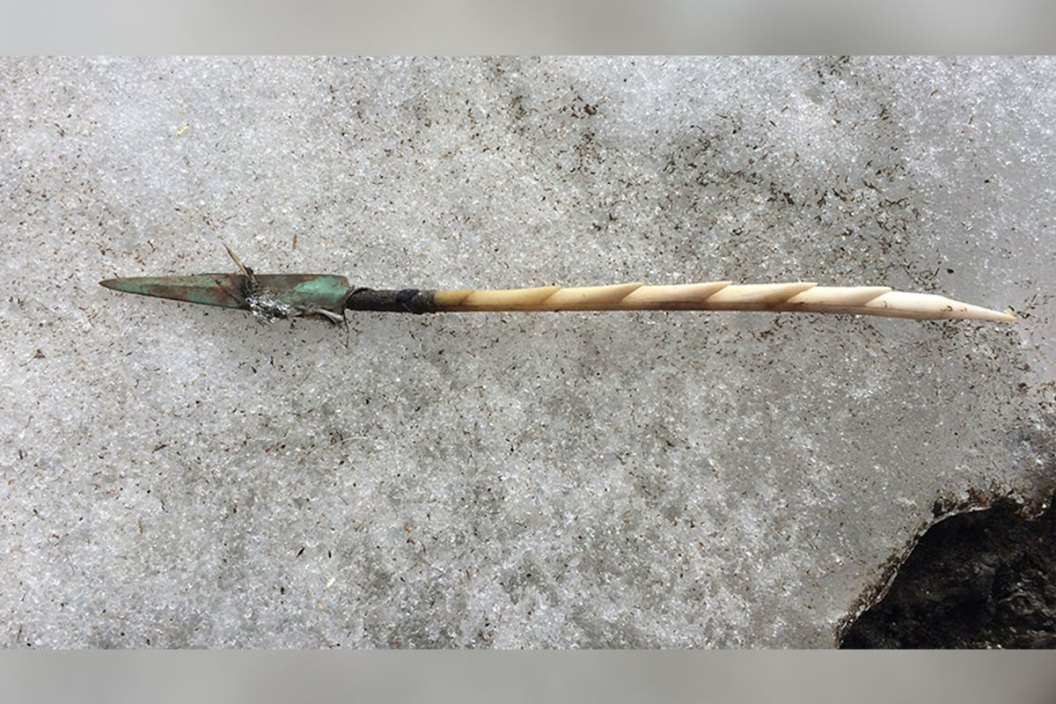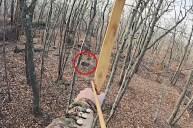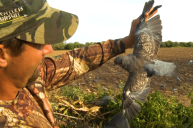A rare copper arrowhead was discovered in the melting Yukon ice.
NOTE: Post was originally published in January 2018
Archeologists claim that it was pure luck that led them to find one of the earliest examples of copper metallurgy ever discovered in the Yukon.
The point and attached arrow shaft found in melting ice are nearly 1,000-years old, making it one of the earliest examples of bow and arrow technology in the Yukon, Canada, and North American history.
Archeologist Christian Thomas and his team were flying in two helicopters with a documentary film crew near Carcross, Yukon. They were showing the film crew areas where they had been finding ancient hunting artifacts over the last couple of decades.
The team saw some caribou on the mountainside and decided to film them. The archeologists landed their helicopter in order to get it out of a film shot by the documentary crew. Upon landing, Thomas quickly spotted the barbed antler arrow shaft sticking out of the ice.
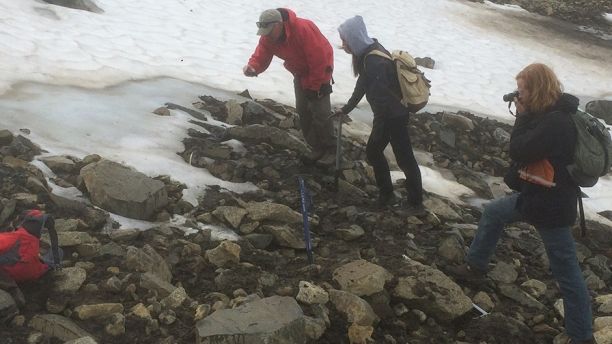
Government of Yukon
Fellow archeologist Greg Hare recounted the discovery:
"It was found near the top of a snow-capped mountain in South West Yukon. It was an incredible discovery, we really didn't intend to be on that ice patch on that day."
"It was so fortuitous that those caribou were on that patch, that the television crew wanted to film that, that we landed at this little scruffy patch," said Hare. "We would have never have stopped there any other time because that ice patch melted right away."
"While we were there we thought we would look around and within five minutes Chris found this massive barbed antler point sticking out of the ice patch."
The arrow fragment, including the barbed antler shaft and copper hunting arrow point, is around eleven inches long. Hare indicated that it is one of the earliest examples of bow and arrow technology ever found in the Yukon. Radiocarbon dating puts the arrow at 936 years old.
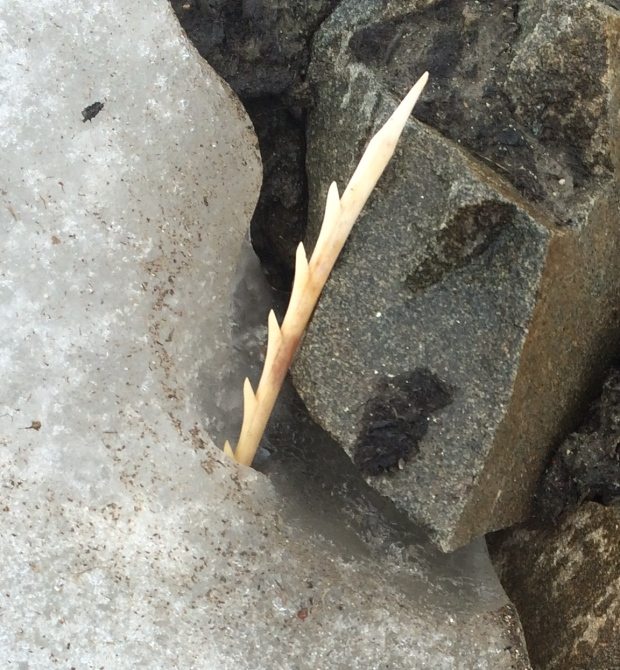
Government of Yukon
"The advantage of the ice patch project is that most of what we're finding has an organic element that lets us radiocarbon date it," Hare said. "We will never find things like this in a lowland setting. The arrow is only preserved because it has been locked in the ice for basically 1,000 years."
The mountain area was a prime hunting spot for early hunters, as the caribou would climb to higher altitudes to escape the swarms of insects in the lowlands. Hunters would stalk these high patches and ambush to ambush the animals.
Archeologists have found around 250 different artifacts from First Nations hunters in the Southern Yukon region, including atlatl or throwing darts.
"The significant part of the story is that the arrowhead is so old, and it is such a beautiful expression of copper metallurgy," Hare said. "Copper only first shows up in the Yukon about a thousand years ago and this is almost at the beginning of that technology."
"Most people when they think of First Nation hunters, they associate with bow and arrow hunting. But in fact, for almost 8,000 years First Nation hunters in the Yukon were using the throwing darts, the Atliatli."
"Then all of a sudden there was quite a sharp change in the technology, for whatever reason. People stopped using the throwing dart and they started using bow and arrow."
Archeologists believe that it would have taken a hunter around two weeks to craft the copper arrowhead, so its loss would have been keenly felt by its owner.
"... my question at the time we found it was, how long did that person spend looking for it, after they lost it," reflected Hare. "I think they would have looked for two weeks."
Find hunting gear and more at Sportsman's Guide.
Like what you see here? You can read more great articles by David Smith at his facebook page, Stumpjack Outdoors.
NEXT: Primitive Skills: Making an ?-tzi the Iceman Flint Dagger
WATCH
